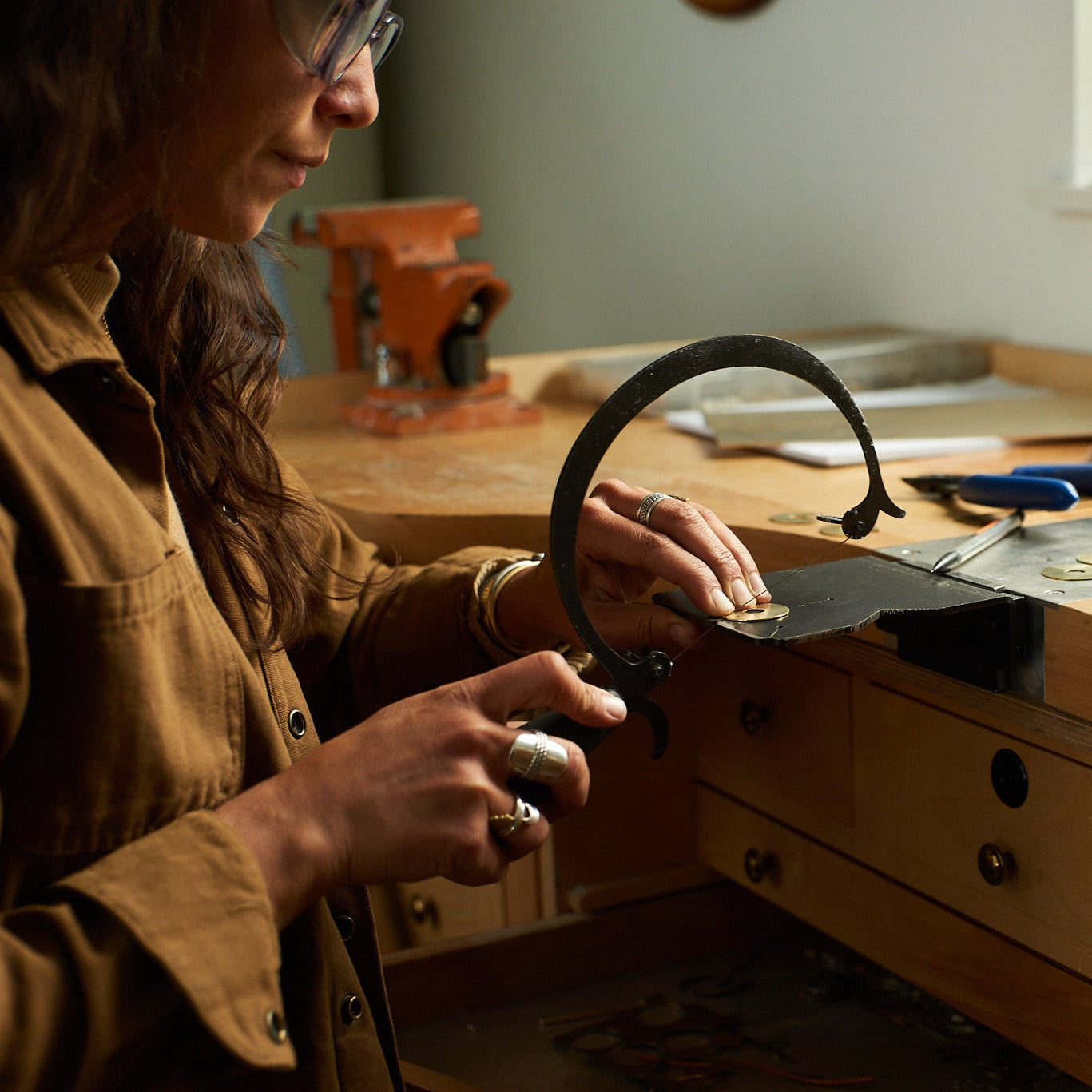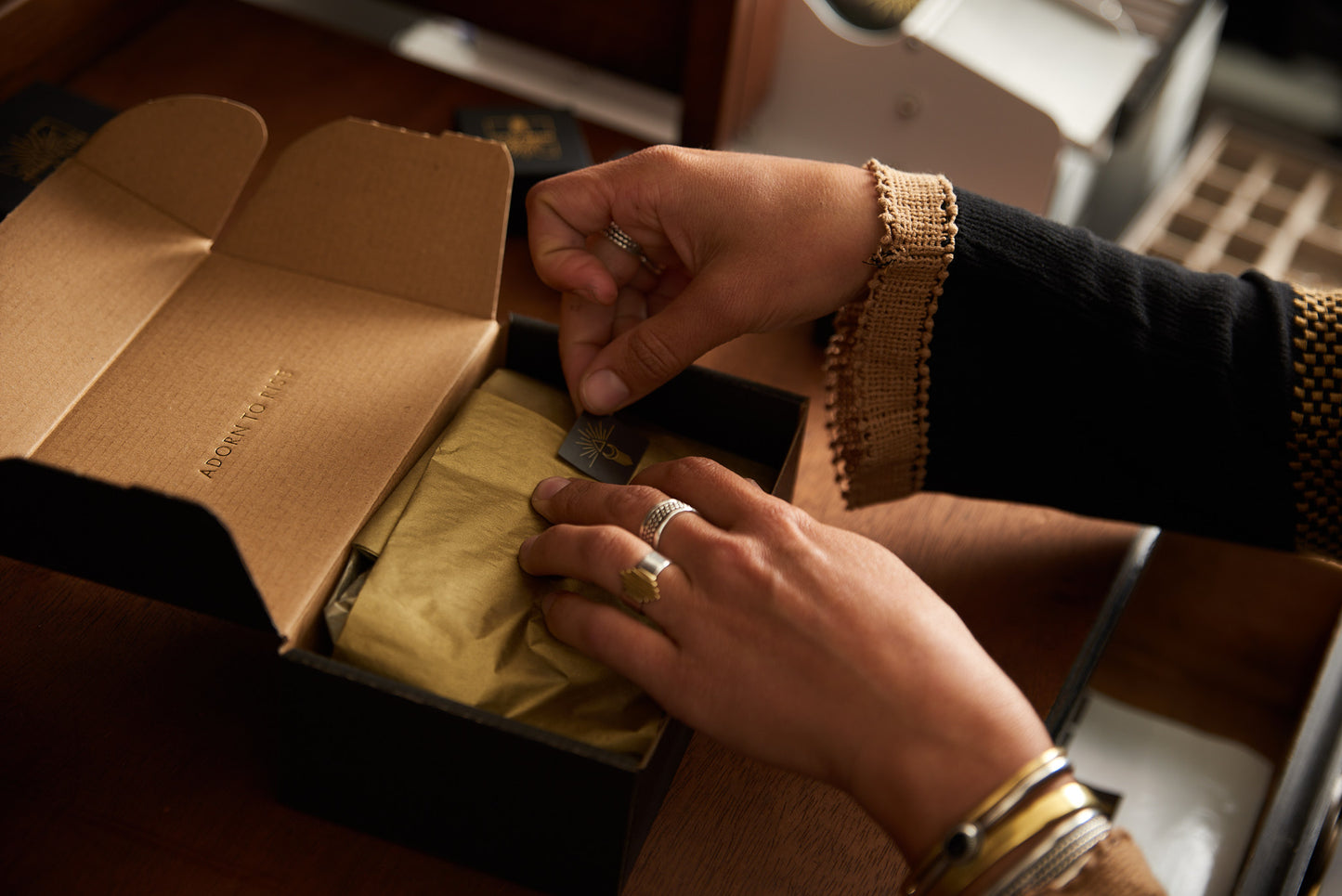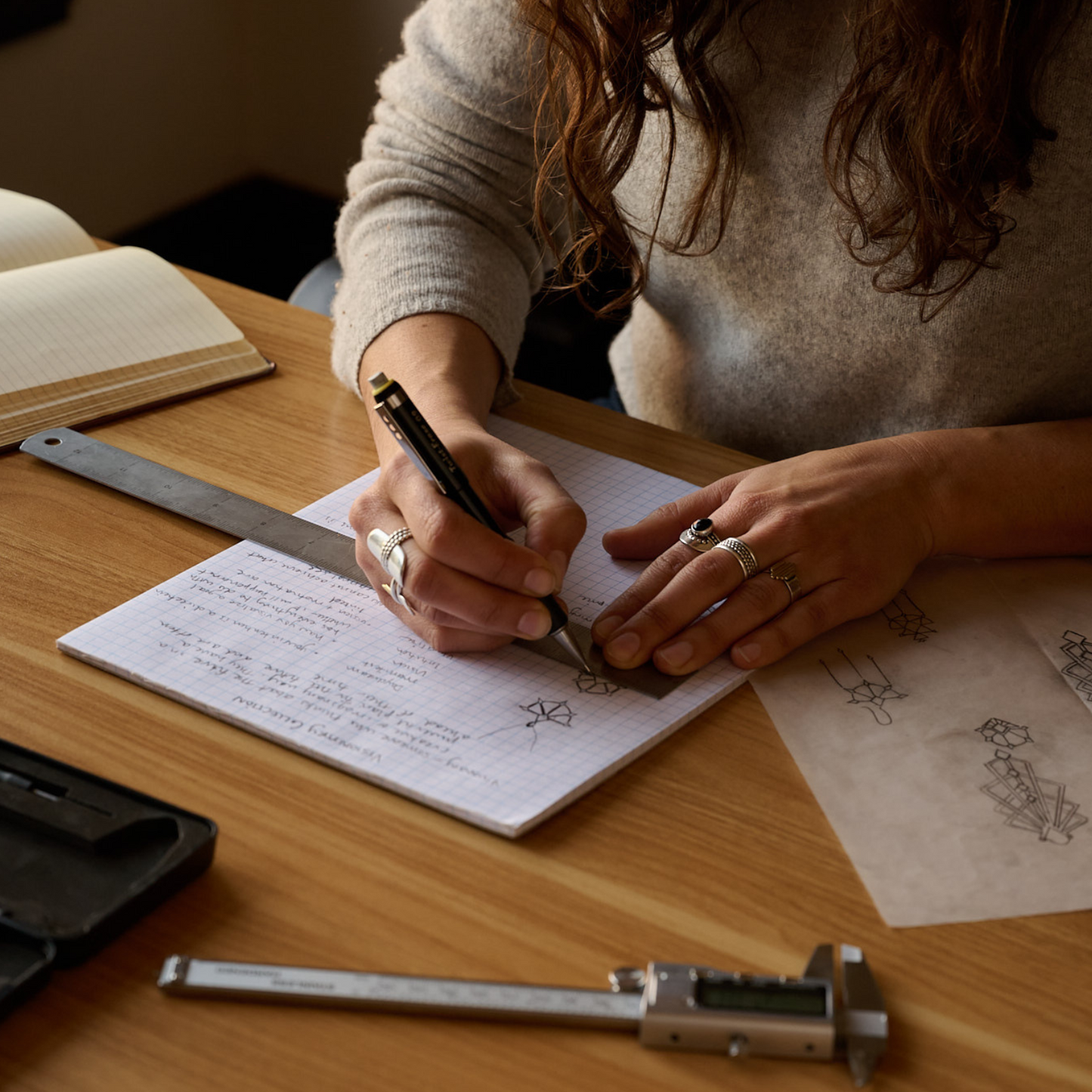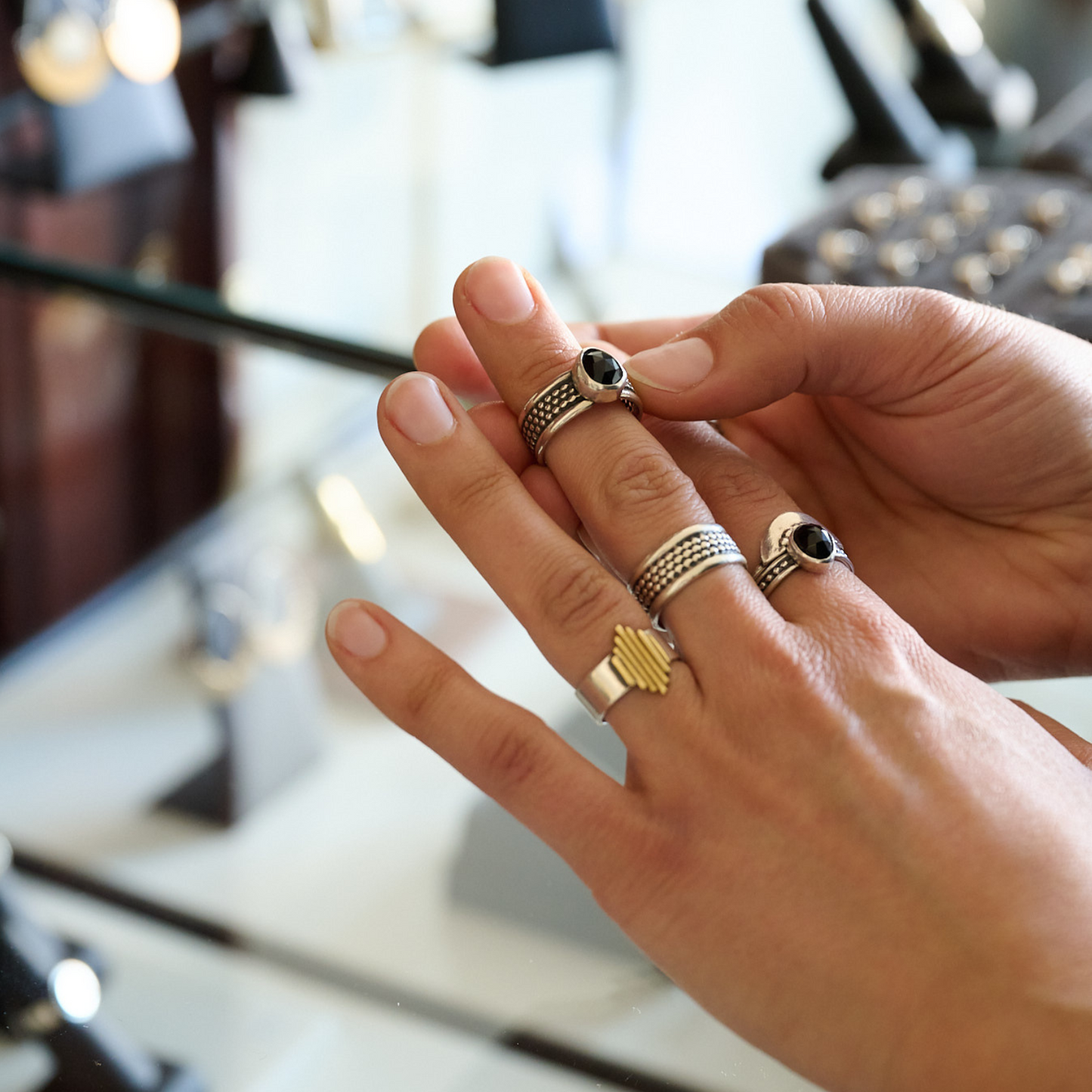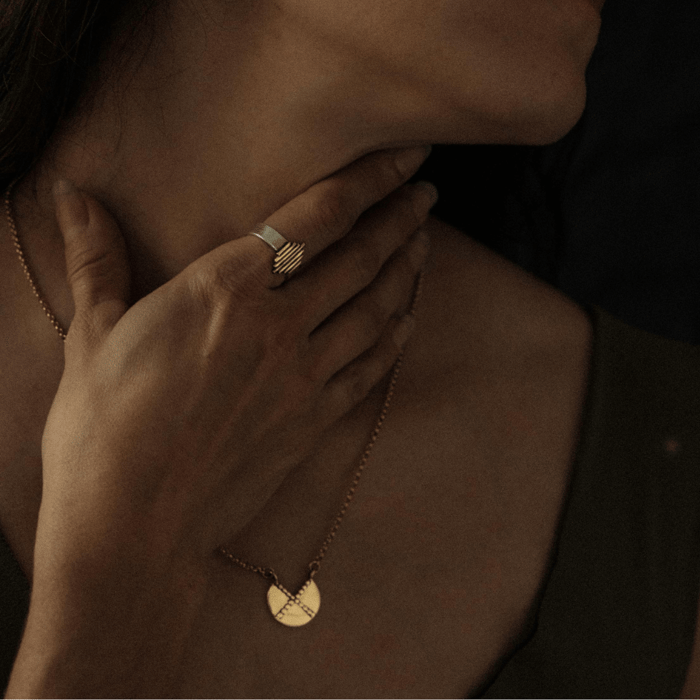The allure of gold jewelry is undeniable. Its timeless beauty, radiant luster, and promise of life long value has captivated the hearts and minds of jewelry wearers for centuries.
But for today's buyers, the landscape of gold jewelry is far from straightforward. The term "gold jewelry" has evolved into a multitude of choices, often veiled in ambiguity, and sometimes is completely mis-marketed.
If you’re not used to jewelry industry jargon the options for solid and non-solid gold can be confusing. It becomes even more confusing when companies aren’t fully transparent in labeling what their jewelry is actually is made of.
I’ve noticed a lot of fast fashion brands marketing their jewelry as “gold” referring only to the color of the jewelry but not the actual metal type. As a designer, maker, and seller of jewelry I find it appalling and incredibly misleading to refer to anything and everything that is gold in color as “gold”.
So often in my conversations with customers, I hear people mistakenly refer to their brass or gold plated jewelry as “gold” only to later face disappointment when they have issues like tarnishing or plating wear. That is why understanding the difference between brass, gold-plate, gold-vermeil, and gold is so important.
The fact that brass tarnishes and plating wears off is not inherently the problem, just as long as that is understood. The problem lies in mislabeling or just plain misunderstanding what your jewelry is made of.
I will clarify some terminology for you so you understand exactly what you are buying, can determine how to select the right materials for your specific needs as well as your budget.
I will dive into the distinction between brass, gold plating, gold vermeil, and solid gold jewelry. While they all share a gold-like appearance, they are not all solid gold. While each option is a perfectly legitimate material to offer, it's essential to understand these differences, as it influences not only the price you pay, but the way you’ll wear and care for your pieces.
Let's demystify "gold" jewelry and empower you to make informed choices in the world of adornment.
Gold-Plate Gold-plated jewelry typically consists of a base metal, such as copper or brass, with a thin layer of gold applied through an electroplating process. The gold layer is typically 0.5 to 2.5 microns thick and may wear off over time, eventually revealing the underlying metal. Due to the added cost and labor involved in the plating process, gold-plate can be more costly than brass but the finish the plating provides is often short lived. While gold-plated jewelry offers an affordable way to achieve the appearance of gold, it is susceptible to rubbing off due to the pH of your skin and can easily scratch with regular wear. I advise against using gold-plated jewelry for rings, as they are particularly prone to wear and tear. Keep in mind, if you have a base metal allergy, gold plating may not be suitable, as it will eventually wear off, exposing the base metal to your skin. Gold-plated jewelry is an excellent option for individuals without a base metal allergy, who desire a gold look at an affordable price, who are willing to take extra caution to handle their jewelry delicately to preserve the plating as much as possible, as well as for those who are accepting of inevitable change in appearance over time. |
Gold-Vermeil Gold vermeil is a higher end alternative to standard gold plating. It is crafted using a sterling silver base instead of a base metal. Then a thicker gold layer is applied through electroplating, typically measuring between 2.5 and 5 microns. Gold vermeil plating is much thicker than gold plate, though not indestructible, so it still requires a more delicate handling and storage solution. Due to the higher quality material underneath and the thicker gold coating it is more expensive than traditional gold plate. It's important to note that gold vermeil can still tarnish slowly and subtly, as the sterling silver base is still susceptible to environmental effects. And, unlike solid metals, plated materials cannot be polished with a polishing cloth, as they polishing cloths are abrasive enough to completely remove the plating. Gold vermeil is an excellent choice for individuals seeking the appearance of gold without the full cost of solid gold. It is more expensive than traditional gold plate but will have a longer lasting plating with a higher quality material underneath. It is a great option for those who have a base metal allergy since the underlying metal is silver. However, I still don’t recommend gold vermeil for rings unless you don’t mind that the silver underneath will eventually show through. |
Conclusion
I hope this sheds light about jewelry industry terminology and the world of “gold jewelry”. Keep in mind, not all jewelry brands refer to gold-plated or gold-vermeil honestly. When shopping for solid gold jewelry, make sure you read the fine print. Exercise caution when “gold” jewelry is being offered for a low price, it is probably plated, which again, isn’t inherently a problem as long as it is being labeled with transparency.
All my jewelry at Adorn to Rise is comprised of brass, silver, and solid gold. I don’t use any plating or coating on my jewelry. Brass and silver do tarnish and require regular polishing with a polishing cloth if you prefer to maintain its original luster. Gold needs very little maintenance but the occasional polish will give it an exceptional glow.
I love solid metals because any changes in appearance can be maintained and revived by the owner. Once a plated piece loses its coating most people don’t have the resources or connections to be able to get their pieces re-plated, and a lot of companies don’t offer it. I would rather empower my customers with the knowledge of the properties of different metal types, storage advice, and care and just explain the inevitable process of how metals change with time. In fact, their timeworn look is part of the appeal for many. I hope this brings clarity on how you decide which gold colored metal works for you and your budget and why there are differences in pricing. Now, go use your newly acquired jewelry industry jargon to make empowered choices about your beloved jewelry purchases!
